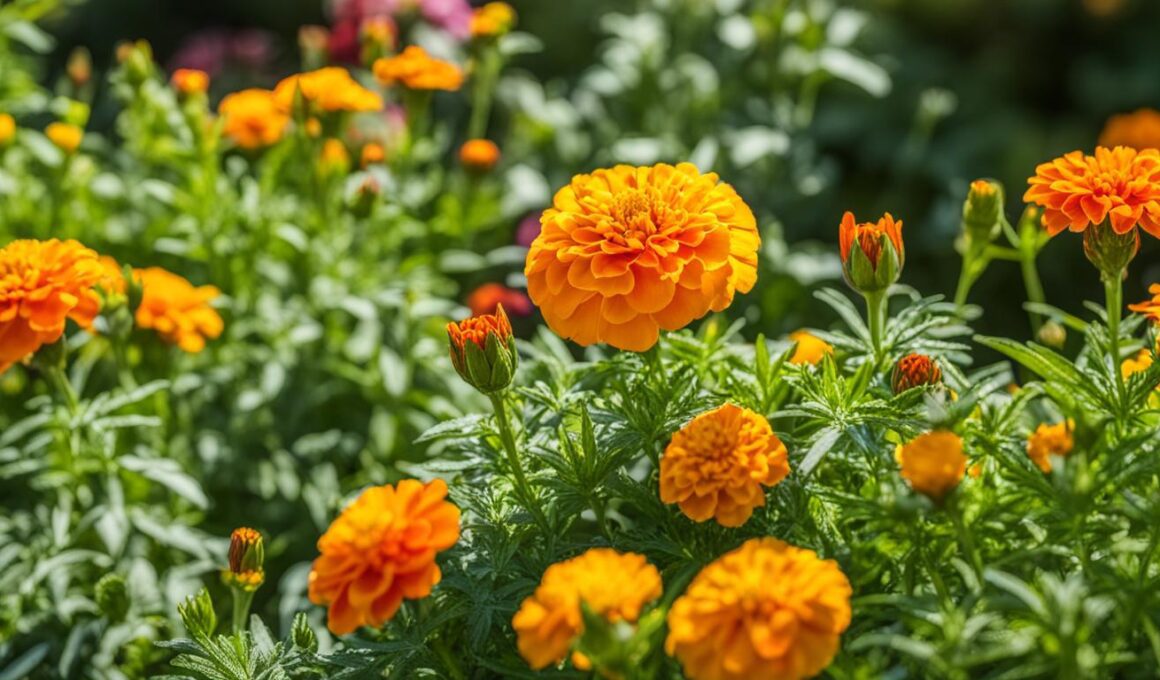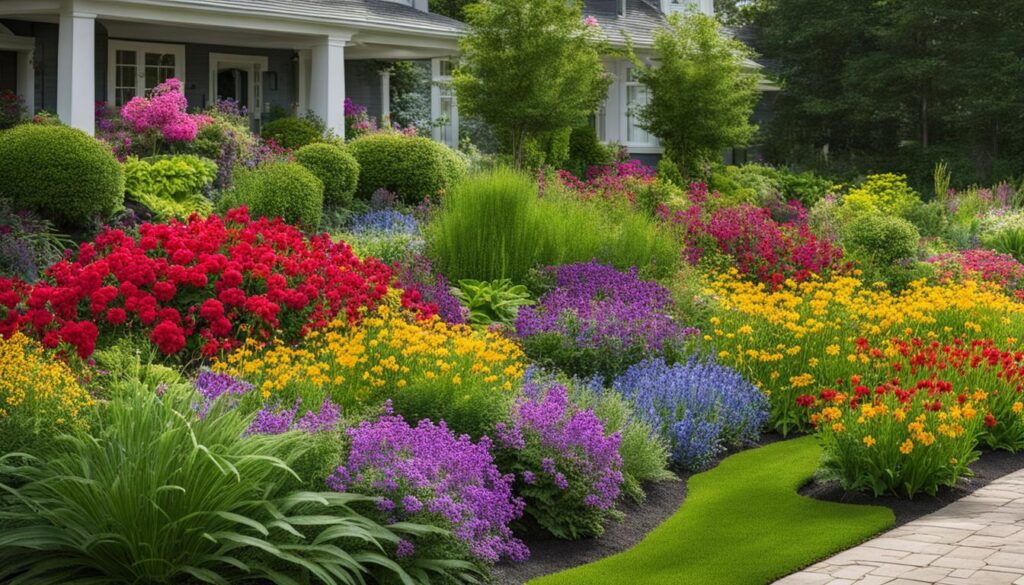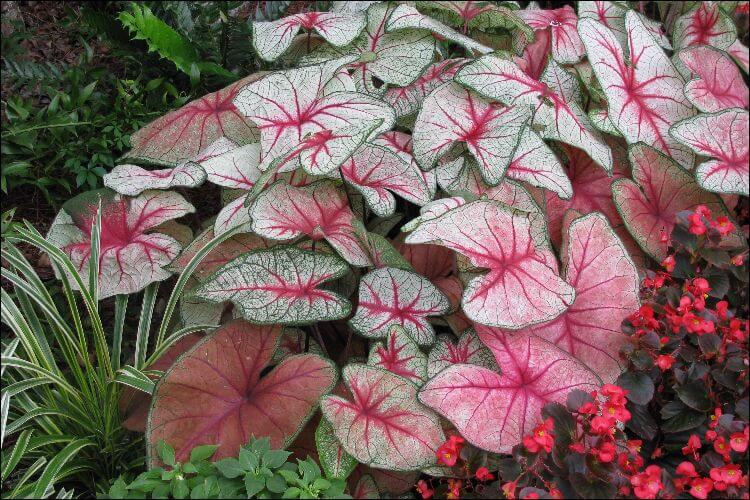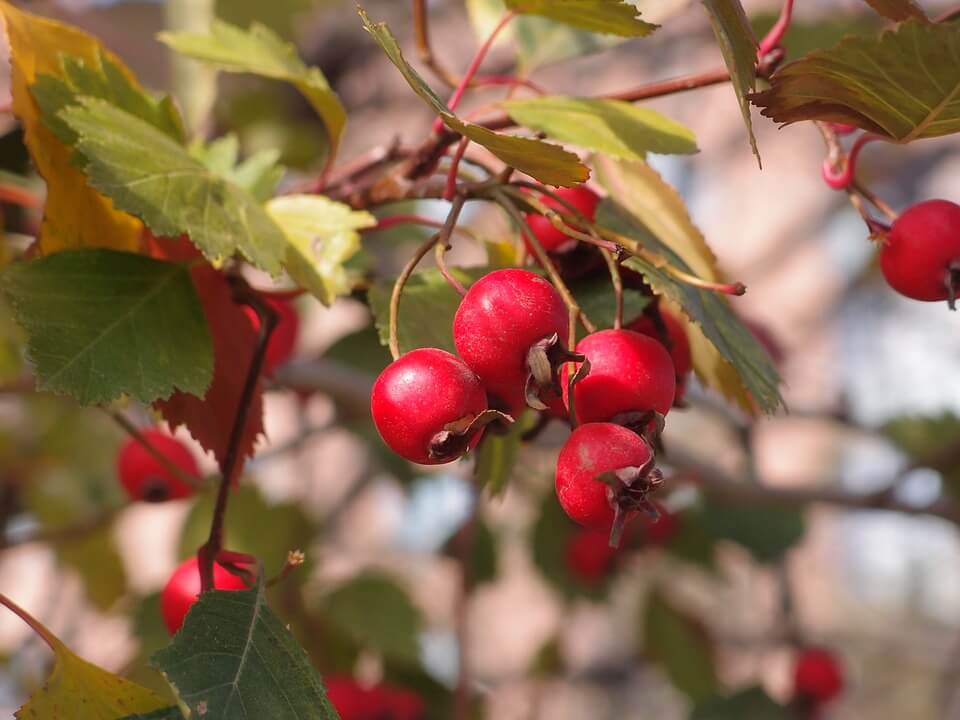Marigolds, scientifically known as Tagetes spp., are a beloved addition to gardens worldwide. However, there is often confusion about whether marigolds are perennial plants or annuals. In this article, we will explore the world of marigolds, their different species and varieties, and their life cycle to determine if they are perennials or annuals.
Key Takeaways:
- Marigolds are a popular choice for garden flowers.
- There is confusion about whether marigolds are perennial or annual plants.
- We will explore the different species and varieties of marigolds.
- Understanding the distinctions between perennials and annuals is essential.
- French marigolds are typically grown as annuals, while African marigolds may exhibit perennial behavior in mild climates.
Understanding Marigold Species and Cultivars
Marigolds, with their vibrant blooms and distinctive scent, are a popular choice for gardeners. To fully appreciate these stunning flowers, it is important to understand the different species and cultivars of marigolds. Two noteworthy species of marigolds are Tagetes patula, commonly known as French marigolds, and Tagetes erecta, often referred to as African marigolds.
French marigolds (Tagetes patula) are known for their compact size and bushy growth habit. They typically reach a height of 6-12 inches and produce an abundance of small to medium-sized flowers in various shades of yellow, orange, and red. French marigolds are perfect for borders, containers, and edging, adding a pop of color to any garden.
African marigolds (Tagetes erecta), on the other hand, are known for their larger size and taller stems. These marigolds can reach a height of 1-3 feet and produce stunning, fully double flowers in vibrant hues of yellow, orange, and gold. African marigolds make a bold statement in garden beds and are also popular for cut flower arrangements.
Exploring Marigold Cultivars
Within each species, there are numerous cultivars of marigolds, offering a wide range of options for gardeners. For French marigolds, popular cultivars include ‘Bonanza’, ‘Dainty Marietta’, and ‘Janie’. These cultivars feature compact sizes, early blooming, and a variety of color options.
When it comes to African marigolds, notable cultivars include ‘Crackerjack’, ‘Inca’, and ‘Antigua’. These cultivars are prized for their large, showy flowers and long-lasting blooms. They are often chosen for their ability to thrive in hot, sunny climates and their impressive resistance to diseases.
By understanding the different species and cultivars of marigolds, gardeners can make informed choices about which varieties will best suit their gardening needs. Whether you prefer the compact and colorful French marigolds or the towering beauty of African marigolds, these stunning flowers are sure to add a touch of brightness to your garden.
Perennials vs. Annuals: The Distinctions
To determine if marigolds are perennials or annuals, it is important to understand the distinctions between these two categories of plants.
Perennial plants endure for multiple years, going through a period of dormancy during adverse conditions and regrowing in subsequent seasons.
Annual plants complete their life cycle in a single year, germinating, growing, flowering, producing seeds, and then dying.
Knowing these differences will help us understand the life cycle of marigolds. Marigolds are generally considered annuals and complete their life cycle within a single growing season. However, some species, like African marigolds, have the potential to exhibit perennial behavior in mild climates.
Understanding whether marigolds are perennials or annuals is crucial for gardeners, as it impacts their planting choices and expectations. By knowing the life cycle of marigolds, you can plan accordingly and choose the right plants for your garden.
The Life Cycle of Marigolds
Marigolds, like many other plants, go through a specific life cycle. Here are the key stages of the marigold life cycle:
- Germination: Marigold seeds sprout and develop roots, stems, and leaves.
- Growth: The seedlings continue to grow and develop into mature plants.
- Flowering: Marigold plants produce vibrant blooms in various colors.
- Seed production: The flowers turn into seed heads, containing the next generation of marigold seeds.
- Propagation: The mature seeds disperse, either naturally or with the help of wind, animals, or human intervention.
- Regeneration: In the case of perennial marigolds, they survive adverse conditions and regrow in subsequent seasons.
By understanding the life cycle of marigolds, you can better appreciate their growth and nature, whether they are perennials or annuals.
The Annual Behavior of Marigold Varieties
When it comes to marigold varieties, there are two popular options that gardeners often choose – French marigolds and African marigolds. French marigolds, known for their vibrant colors and compact size, are usually grown and regarded as annuals. They bring an abundant burst of color to your garden for a single growing season, adding a lively touch to any outdoor space.
African marigolds, on the other hand, have the potential to exhibit perennial behavior in regions with mild winters. While they are often treated as annuals in colder areas, in warmer climates they can survive the winter and regrow the following spring. Their ability to adapt and exhibit perennial characteristics makes them a popular choice for gardeners in milder regions.
It’s important to note that while French marigolds have a definite single-year life cycle, African marigolds can display some variation in their behavior depending on the prevailing climate. Therefore, if you’re looking for a longer-lasting marigold plant, African marigolds might be the right choice for your garden in regions with mild winters.
A Quick Comparison: French Marigolds vs. African Marigolds
- French marigolds: annuals with a single-year life cycle
- African marigolds: can exhibit perennial behavior in mild climates
“French marigolds bring an abundant burst of color to your garden for a single growing season.”
“African marigolds have the potential to exhibit perennial behavior in regions with mild winters.”
Understanding the annual behavior of marigold varieties is crucial in making informed gardening choices. Whether you opt for the vibrant French marigolds or the potentially perennial African marigolds, both varieties are sure to add beauty and charm to your garden.
The Factors Influencing Perennial Potential in African Marigolds
When it comes to the perennial behavior of African marigolds, several factors can influence their ability to survive and regrow year after year. One of the key determinants is climate. Mild climates with infrequent frost provide optimal conditions for these marigolds to withstand winter and continue their growth in the following season. On the other hand, consistently freezing temperatures, especially frost, can be detrimental to the survival of marigold plants, hindering their ability to exhibit perennial behavior.
Another crucial factor is temperature. African marigolds thrive in warm temperatures, which further enhances their chance of behaving as perennials. Extreme cold can damage the plants, while warmer temperatures provide the ideal environment for growth and regrowth. Therefore, maintaining a suitable temperature range is essential for encouraging the perennial potential of African marigolds.
Additionally, microclimates within your garden can play a role in the perennial behavior of these marigolds. Some areas of your garden may have unique microclimates that offer slightly different temperatures or levels of protection against frost. Identifying these microclimates and planting your marigolds accordingly can increase their chances of surviving the winter and regrowing as perennials.
Finally, proper care practices can make a significant difference in the perennial potential of African marigolds. Providing adequate water, nutrients, and sunlight, as well as regular pruning and deadheading, can help these plants thrive and increase their likelihood of exhibiting perennial behavior. Creating a favorable environment and tending to their needs will give your African marigolds the best opportunity to become long-lasting additions to your garden.
The Key Factors Influencing Perennial Potential:
- Climate, particularly mild temperatures and infrequent frost
- The right temperature range, with warmer conditions being favorable
- Microclimates within your garden, offering different levels of protection
- Proper care practices, including watering, pruning, and deadheading
Conclusion
In conclusion, when it comes to marigold plants, their perennial or annual nature depends on factors such as species, variety, and environmental conditions. French marigolds are typically treated as annuals, providing a burst of color for a single growing season in your garden. On the other hand, African marigolds have the potential to exhibit perennial behavior in mild climates, but it is important to note that this is not guaranteed in all regions.
Understanding the different marigold varieties and their life cycles can help you make informed choices for your gardening preferences. Whether you opt for the vibrant display of annual French marigolds or the potential long-term presence of African marigolds, both options can be beautiful additions to your outdoor space.
Ultimately, the choice of planting marigold varieties as perennials or annuals is influenced by your personal gardening goals and the specific conditions of your region. Regardless of whether you choose marigold plants for their perennial potential or annual vibrancy, these versatile flowers are sure to enhance the beauty of your garden and bring joy to your gardening experience.
Can Marigold Plants Thrive as Perennials in Different Garden Settings?
If you want to discover if marigolds perennial, consider the garden setting. In warmer climates, marigolds can thrive as perennials. However, in cooler regions, they may be treated as annuals. Factors like soil quality, sunlight, and watering also play a role in determining if they will come back year after year.
FAQ
Are marigolds perennial or annual plants?
Marigolds can be both perennial and annual plants, depending on the specific species, variety, and environmental conditions.
What are some common marigold species and cultivars?
Some common marigold species include Tagetes patula (French marigold) and Tagetes erecta (African marigold). These species have various cultivars with different flower colors, sizes, and growth habits.
What is the difference between perennial and annual plants?
Perennial plants endure for multiple years, going through periods of dormancy during adverse conditions and regrowing in subsequent seasons. Annual plants complete their life cycle in a single year, from germination to flowering to producing seeds and dying.
Do French marigolds behave as perennials?
No, French marigolds are typically grown and regarded as annuals, completing their life cycle in a single growing season.
Can African marigolds exhibit perennial behavior?
African marigolds have the potential to exhibit perennial behavior in mild climates with infrequent frost. However, this is not guaranteed, and they are often treated as annuals in colder areas.
What factors influence the perennial potential of African marigolds?
The perennial behavior of African marigolds depends on factors such as climate, temperature, garden microclimates, and proper care practices. Mild climates with infrequent frost and adequate care increase the chances of these marigolds surviving the winter and regrowing the following year.











